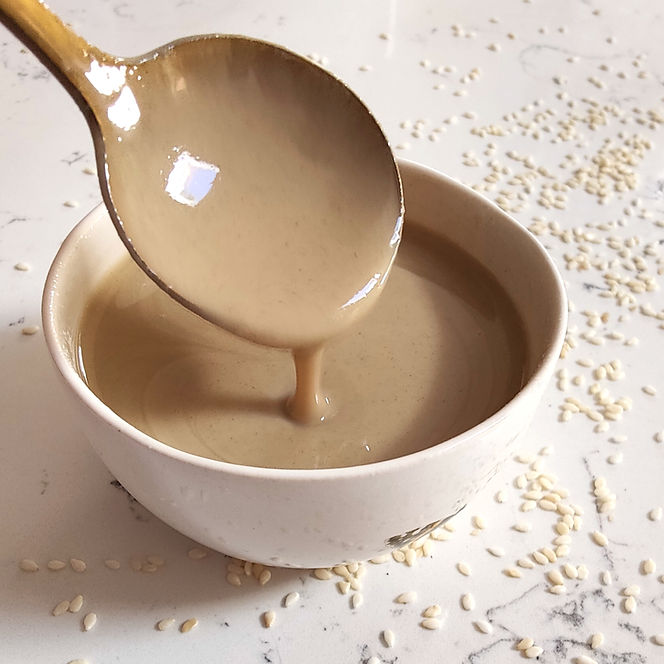
The First Sesame-Based Frozen Dessert
We use seeds for our ice cream base, not nut milk, coconut meat, or soybeans. While most plant-based ice cream brands neutralize the flavor of their base ingredient and focus on creating classic, nostalgic flavors without cow's milk, we embrace sesame butter as a star ingredient and highlight its rich, delicious taste.
You'd be surprised at just how many flavors tahini pairs well with! Our exceptional flavors include cardamom pistachio, cinnamon date, tahini chocolate fudge swirl and walnuts, dark chocolate, and vanilla halvah. Made with all-natural ingredients, each serving is high in protein and serves as a good source of fiber, iron, and calcium.
Why Tahini?
Made from roasted sesame seeds that are ground and pressed into a paste, tahini has a subtle nutty taste that enhances sweet and savory dishes. It has been a staple in Eastern Mediterranean and Middle Eastern plant-focused diets for generations.
Small yet powerful, sesame seeds are often hailed as superfoods due to their rich content of vitamins, minerals, and healthy fats. They are also a good source of protein and fiber, making them a nutritious addition to your diet and an ideal foundation for our nondairy ice cream.

Our Story
Hila Krikov, founder of Sweettahini, moved thousands of miles from her small hometown on the Mediterranean coast to Lubbock, TX, where familiar ingredients like tahini paste and date syrup were nearly impossible to find. In the pre-online shopping era, her family traveled the Southwest searching for beloved pantry staples. At home, Hila turned to her kitchen, recreating the cherished dishes of her childhood.
Years later, after relocating to the Northeast, Sweettahini was born with a mission to introduce diverse tahini-centered goods to U.S. consumers. From flavored tahini spreads and sesame-based breads to tahini chocolate fudge and date tahini rolls, Sweettahini has proudly pioneered tahini-based desserts in the U.S.
Today, the brand is set to disrupt the frozen dessert category with its innovative tahini-based nondairy ice cream line.

